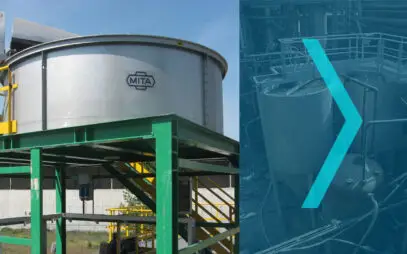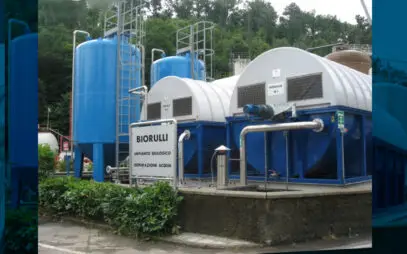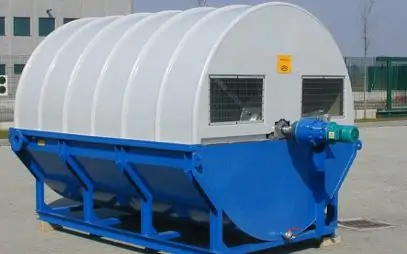Examples of areas: processing of synthetic fibers, weaving and spinning, dyeing, production of clothing and technical textiles.
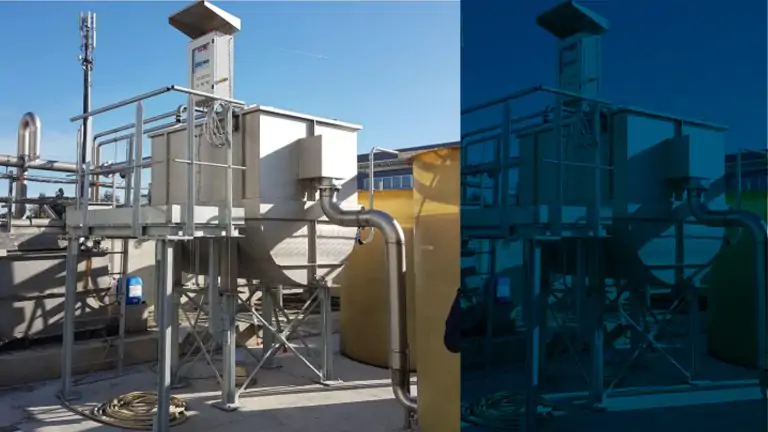
Water Treatment for the Textile and Tanning Industry
Wastewater from the textile and tanning industry is rich in organics and surfactants and suspended solids (such as synthetic fibers or even heavy metals). Therefore, biological and pollutant separation treatments by flotation, often in combination, are useful.
Main requirements: removal of suspended solids (textile fibers, chemicals), biodegradation of organic substances (such as chlorinated organic compounds), de-oiling.
Wastewater treatment systems for the textile and tanning industry
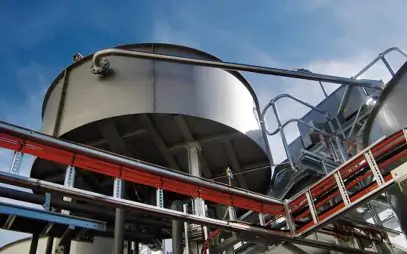
Mitadaf MD Dissolved Air Flotation Units
Mitadaf is the dissolved air flotation (DAF) system developed by MITA Water Technologies. Its outstanding efficiency in separating solids from liquid and thickening sludge comes from a unique approach that combines the use of microbubbles of air, produced by our Mitasat MS, with a uniform effluent hydrodynamic system.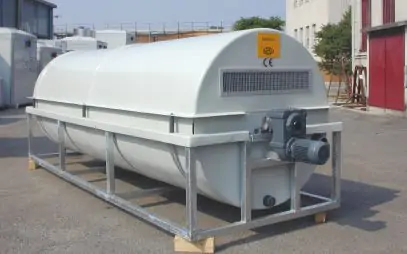
Biorulli® Biological Disc Rotors Monoblock M 115
Efficient, compact, extremely flexible with different pollutant loads: the Biorulli® biological oxidation system, monoblock M 115 series, is ideal for biological water treatment in apartment buildings, villas, small campsites, and factories.
Vertical-Axis Disc Filters PECV VM
An optimal solution for small and medium-sized plants, as much for its compactness as for its simplicity of installation and operation: these are the PECV VM metal tank vertical axis disc filters, for the final separation of suspended solids from civil and industrial wastewater.Industrial wastewater in the textile and tanning industry: characteristics and needs
For industrial wastewater in the textile and tanning sector, as for that in other sectors, only a few examples of wastewater quality can be given: each plant has its own specific needs, which must be tested and evaluated with pilot units before selecting the best technology.
This does not detract from the fact that some recurring critical issues can be noted: organic substances such as tannins and dyes, along with surfactants and pH, often characterize these waters.
In more detail, here are some pollutants that are often detected in waters of the textile and tanning industry.
- Suspended solids. These are the most common components of wastewater from the textile and tanning industry: textile fibers, chemicals, microorganisms, etc. Sometimes thought metals are also present in considerable quantities as processing waste: zinc, copper, lead, cadmium, etc.
- High BOD and COD. Biochemical Oxygen Demand and Chemical Oxygen Demand measure the amount of organic matter, present in wastewater, that consumes the oxygen in the water but can also be degraded by bacteria and other microorganisms, or non-biodegradable. Such substances include chlorinated organic compounds, which are produced by the reaction of chlorine with lignin (found in cellulose).

Water treatment for the textile and tanning industry: methods and processes
Some peculiar methods and processes can contribute to the treatment of textile wastewater (subject always to a preliminary analysis to be carried out with pilot units).
- Biological treatments. Here, bacteria and other microorganisms are used to biodegrade organic matter in wastewater. The most common biological treatments are activated sludge and aerobic oxidation treatments.
- Filtration. Cloth filters, sand filters, membrane filters, or activated carbon filters-all of these technologies separate pollutant components by mechanical process, albeit with different systems and varying degrees of suspended solids removal.
- Disinfection. Used to eliminate pathogenic microorganisms from wastewater. The most common disinfection processes are those using chlorine, ozone, or UV light.
MITA Water Technologies' solutions for wastewater in the textile and tanning industry
- Mitadaf dissolved-air flotation units. It has proven to be an effective solution for the treatment of these waters, upstream of any biological and/or chemical/physical processes: this system removes about 80% of the fats and solids contained in the waters, and also performs a partial abatement on the surfactants related to them.
- Biorulli® rotating biological contactors. These biological oxidation systems have also been used in printing mills, woolen mills, felt mills, etc. especially for the biodegradation of surfactants, particularly nonionic surfactants. Small size, ease of operation and low energy use are good advantages for which they are often preferred to alternative biological purification systems.
- Pile cloth media filters. Although not directly used for disinfection, cloth filters are often useful upstream of reverse osmosis and UV lamp systems: in these cases, they lighten the suspended solids loads entering subsequent technologies, preventing them from inhibiting their action.
Some MITA Projects
- Industrial Wastewater
- Suspended Solid Removal
- BOD and COD Removal
- Oil and Grease Removal
- Biorulli® Biodiscs
- Dissolved Air Flotation Units
- Continuous Sand Filters
Water Treatment and Cooling Systems for Vedani Group
Various industrial water treatment technologies as well as cooling technologies: since 1995 MITA Water Technologies has provided multiple solutions, together with its "sister" company MITA Cooling Technologies, for the complete water management of Vedani Group, which has been active in aluminum processing since 1982.
Read moreBiological Rotors for the Chemical Company Icap-Sira
High efficiency, ease of installation, and extreme operation-these are the features that a well-known company in the chemical industry appreciated in choosing Biorulli® biodiscs for the biological oxidation of its wastewater. MITA Water Technologies has been cooperating with this industry since 2006.
Read moreBiorulli® Rotating Biological Contactors for ENI
Customization and long-term trust relationship: these are the two variables that decided the award to MITA Water Technologies of the revamping of the water treatment of an ENI depot in Central Italy. Rotary biological contactors, supplied to the company, are simple but efficient devices for COD removal.
Read moreWhat is your process goal?
Tools to help you choose
Industrial and civil wastewater treatment technologies
Our support throughout the product life cycle
A sustainable and efficient solution for every industry and need
Or You Can Choose
Our Newsletter
Sign up for the MITA Water Technologies newsletter: stay up-to-date on systems for municipal and industrial wastewater treatment and filtration.
